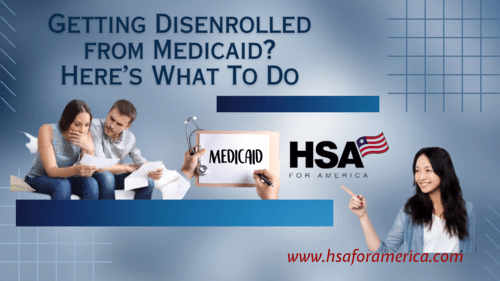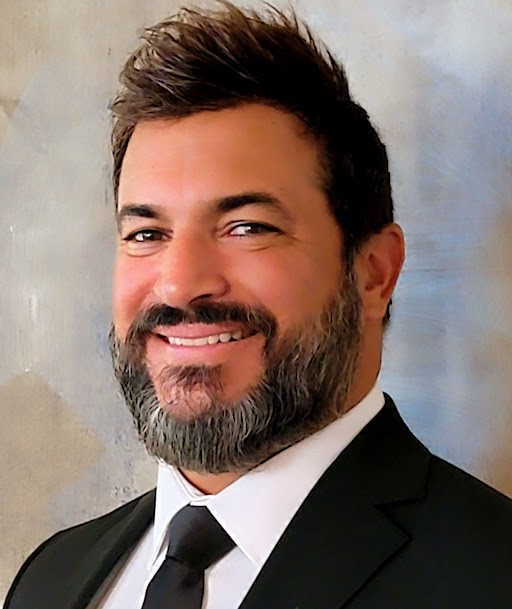Thanks to the end of the COVID-19 Public Health Emergency (PHE), some 15 million Americans will be disenrolled from Medicaid over the coming months.

The changes will affect about 17 percent of all those enrolled in Medicaid or the Children’s Health Insurance Program (CHIP).
If you’re among the 15 million people who are disenrolled, you will need to find new health coverage. Here’s what you need to know.
Why Am I Being Disenrolled from Medicaid?
When the Coronavirus pandemic started, Congress passed the Families First Coronavirus Response Act (FFCRA), which prevented state Medicaid programs from kicking people off Medicaid when they lost eligibility under the normal rules.
In return, Congress provided extra funding to state Medicaid programs to help states pay for the increased number of people on Medicaid.
However, the Consolidated Appropriations Act, which Congress passed late last year, dropped the Medicaid continuous enrollment requirement from the PHE provisions. This means that the extra federal Medicaid funding is drying up over the course of the rest of the year.
That doesn’t mean everyone on Medicaid is being dropped from the program. But if you earn too much to qualify for Medicaid under the normal rules, or if you have access to a health plan via an employer, you may be disenrolled over the next six months. Learn more: Unwinding and Returning to Regular Operations after COVID-19
According to the Kaiser Family Foundation, this group amounts to about 8 million of the 15 million who will be disenrolled.
The U.S. Department of Health and Human Services estimates that out of those 15 million who are deemed ineligible, about 2.7 million will qualify for a subsidy under the Affordable Care Act to help make private health insurance more affordable.
Health Department planners also estimate that 5 million Medicaid disenrollees will find coverage via an employer plan.
They also estimate another 6.8 million people will lose coverage as a result of “bureaucratic churn.” That is, administrative error.
While Medicaid is federally funded, each state runs its own Medicaid program, subject to federal guidelines. Therefore, the disenrollment timeline and specific criteria will vary state by state.
If you receive a notification that you will lose your Medicaid coverage, here are some things you can do.
Compare Pricing on the Best Insurance Plans Available
Buy an Affordable Care Act-Qualified Health Insurance Plan
If you are getting booted from Medicaid because you make too much money to qualify – even though you don’t make very much money – purchasing an Affordable Care Act-qualified individual or family health insurance policy may be the way to go.
If your income falls below a certain percentage of the Federal Poverty Level, you may receive a subsidy to help you pay your health insurance premiums. The lower your household income, the greater the subsidy you may qualify for.
This approach may be a great strategy if your income is relatively low, you have pre-existing conditions, or both.
Special Enrollment Period for People Disenrolled From Medicaid
If you get disenrolled from Medicaid, you will qualify for a Special Enrollment Period. This is a 60-day period during which you have a guaranteed right to enroll in an Affordable Care Act-qualified health insurance plan. You will need to provide information about your household size, income, and other relevant details to determine your eligibility for subsidies and select a suitable plan.
Normally, health plans don’t allow you to sign up outside the Open Enrollment Period. (November 1st through January 15th in most states).
But the law makes an exception for people who have a qualifying life event. These qualifying events include losing access to your previous health plan, along with things like marriage, divorce, widowhood, or the birth or adoption of a child.
If you are disenrolled from Medicaid, take action quickly to enroll in a new plan.
For free, no-obligation assistance in researching and selecting the best possible Affordable Care Act-qualified health insurance plan for you, contact a Personal Benefits Manager.
Enroll in a Workplace Plan
The employment situation has improved radically since the early days of the pandemic. It may be a great idea to find a job that offers a good health plan, and then enroll in your employers’ plan.
Employer-sponsored health insurance can be a big help, since by law, employers who sponsor group health plans must generally pay at least half the premiums. And most employers pay substantially more than that.
Deductibles tend to be lower for workplace group health insurance plans, as well.
Some workplace plans subsidize health insurance for employees only, while others include family members.
Enroll in a Healthsharing Plan
Healthsharing is for many people a more affordable alternative to traditional health insurance.
Healthsharing plans are not insurance policies. Instead, they are non-profit associations of health-conscious, like-minded people who share similar values, and who have agreed to pool their resources and help share the medical bills of fellow members.
Healthsharing plans help members pay for large and catastrophic unforeseen medical bills. And they are available at 40 to 50% less than the unsubsidized cost of a traditional Affordable Care Act-qualified policy.
If you earn too much to qualify for a subsidy, or if you can only qualify for a small one, a healthsharing plan can be a terrific solution. Healthsharing can also potentially save thousands of dollars per year per household.
However, healthsharing may not work well if you or a member of your household has pre-existing conditions. That’s because healthsharing plans typically impose a waiting period before costs of treating pre-existing conditions become shareable.
Unlike Obamacare health insurance plans, healthsharing plans do not impose a special enrollment period. You can enroll in a healthsharing plan at any time.
Compare Pricing on the Best HealthShare Plans Available
Appeal if You’re Disenrolled From Medicaid
If you believe you are being disenrolled in error, you can file an appeal with your state’s Medicaid offices.
Your Medicaid Notice of Disenrollment should contain specific instructions on how to file an appeal, and how long you have to submit your request. It’s best to file an appeal request in writing in person at your closest state Medicaid office.
Get the office to put a date and time stamp on your appeal request, so they cannot later claim you missed the deadline for appeals.
Get Help if You’re Disenrolled from Medicaid
Health insurance is complicated. There are no “one-size-fits-all” solutions. If you expect to lose Medicaid coverage due to the expiration of the Public Health Emergency, contact a Personal Benefits Manager right away to discuss your options.
Once you lose Medicaid coverage, you only have a 60 day Special Enrollment Period to enroll in a new health insurance plan. So it’s important to act quickly and get enrolled in a new plan, to avoid a break in coverage.
Engaging a Personal Benefits Manager early in the process can save hours of research, and potentially hundreds or even thousands of dollars in premiums each year.
PBM assistance is free, and there’s never any obligation. Click here to make an appointment.
To ensure that you stay informed about any changes in your Medicaid coverage, it is essential to update your contact information, including your home address, phone number, and email, with the state agency responsible for administering Medicaid benefits. States are required to mail a renewal form to your home address, and they may also use alternative communication methods such as phone calls, text messages, or emails to remind you to fill out the form. These additional notifications aim to enhance accessibility and reduce the chances of missing important information.
Options for Individuals Being Disenrolled From Medicaid
If you find yourself no longer eligible for Medicaid, there are alternative options to consider, such as the Affordable Care Act’s marketplace. The marketplace offers various healthcare coverage plans, some of which may cost less than $10 per month. However, it’s important to note that marketplace coverage differs from Medicaid, as it often entails higher out-of-pocket expenses and co-pays. Additionally, it’s crucial to check if the marketplace insurance plans will still cover your preferred healthcare providers.
Special Enrollment Period and Timelines
A special enrollment period will be available for individuals who become unenrolled from Medicaid, starting from March 31 and lasting through July 31, 2024. If you lose Medicaid coverage, you will have up to 60 days to enroll in an alternative healthcare plan after the disenrollment takes effect. It is advisable to explore your options promptly to ensure a seamless transition and uninterrupted coverage.
Impact on Children’s Coverage
If your children are currently enrolled in Medicaid, it’s important to note that their coverage may be unaffected even if you are no longer eligible. More than half of U.S. children receive healthcare coverage through Medicaid or the Children’s Health Insurance Program (CHIP). Even if you receive a notice stating your own ineligibility, it is highly likely that your children will still qualify for Medicaid or CHIP. These programs cater to children from families who earn too much to qualify for Medicaid but lack the financial means to afford private health insurance.
Disenrolled from Medicaid Conclusion
The prospect of losing Medicaid coverage can be daunting, but it is crucial to remain informed and explore alternative options. By understanding the potential disenrollment process, staying updated on communication channels, and considering available alternatives such as the marketplace, individuals can navigate this transition more effectively.
Remember that the wellbeing of your children is a priority, and there are programs in place to provide them with the necessary healthcare coverage.
If you encounter any difficulties or have questions, seek assistance from healthcare professionals or organizations specializing in Medicaid and health insurance to ensure a smooth transition for you and your family.Here are some additional blogs on the topic: Best Healthshare Plans Comparison Guide 2026 | Direct Primary Care: How to Use a DPC and Still Protect Yourself from Major Medical Expenses
Here are some additional pages related to this article: HSA Secure Plan | DPC Direct Healthshare
FAQs for People Being Disenrolled From Medicaid
How did Medicaid respond to the COVID-19 public health emergency?
During the public health emergency, Medicaid expanded coverage in many states to ensure more people had access to needed health services. This included waiving certain requirements, broadening eligibility criteria, and enhancing benefits such as telehealth services.
Congress also prevented state Medicaid programs from disenrolling beneficiaries during the PHE. Those restrictions are coming to an end and Medicaid enrollment and retention criteria are returning to normal over the course of 2023.
What protections were in place for Medicaid enrollees during the public health emergency?
The Families First Coronavirus Response Act (FFCRA) required states to maintain continuous coverage for Medicaid enrollees during the public health emergency, effectively preventing disenrollment for the duration of the crisis.
Were there any changes in Medicaid enrollment during the COVID-19 pandemic?
Many states saw an increase in Medicaid enrollment during the pandemic, largely due to the economic impact of the crisis which led to income loss and job loss for many individuals and families.
What happened to Medicaid eligibility requirements during the COVID-19 public health emergency?
In response to the pandemic, some states expanded Medicaid eligibility to cover more people, including those who lost jobs or income due to the crisis. These people are likely to be affected by Medicaid disenrollment this year.
Who can I contact for more information about my Medicaid coverage after the end of the public health emergency?
You can reach out to your local Medicaid office for information specific to your situation. If you expect to lose Medicaid coverage, you should contact a Personal Benefits Manager for a free consultation and help understanding your health insurance or healthsharing options.

Hi! I’m Mike Montes, and I’m one of your Personal Benefits Managers. I like working with HSA for America because we’re creating solutions to healthcare problems. Our focus on money-saving alternatives like HSA plans and health sharing programs, and the variety of health share programs we offer, are what set us apart. Read more about me on my Bio page.


